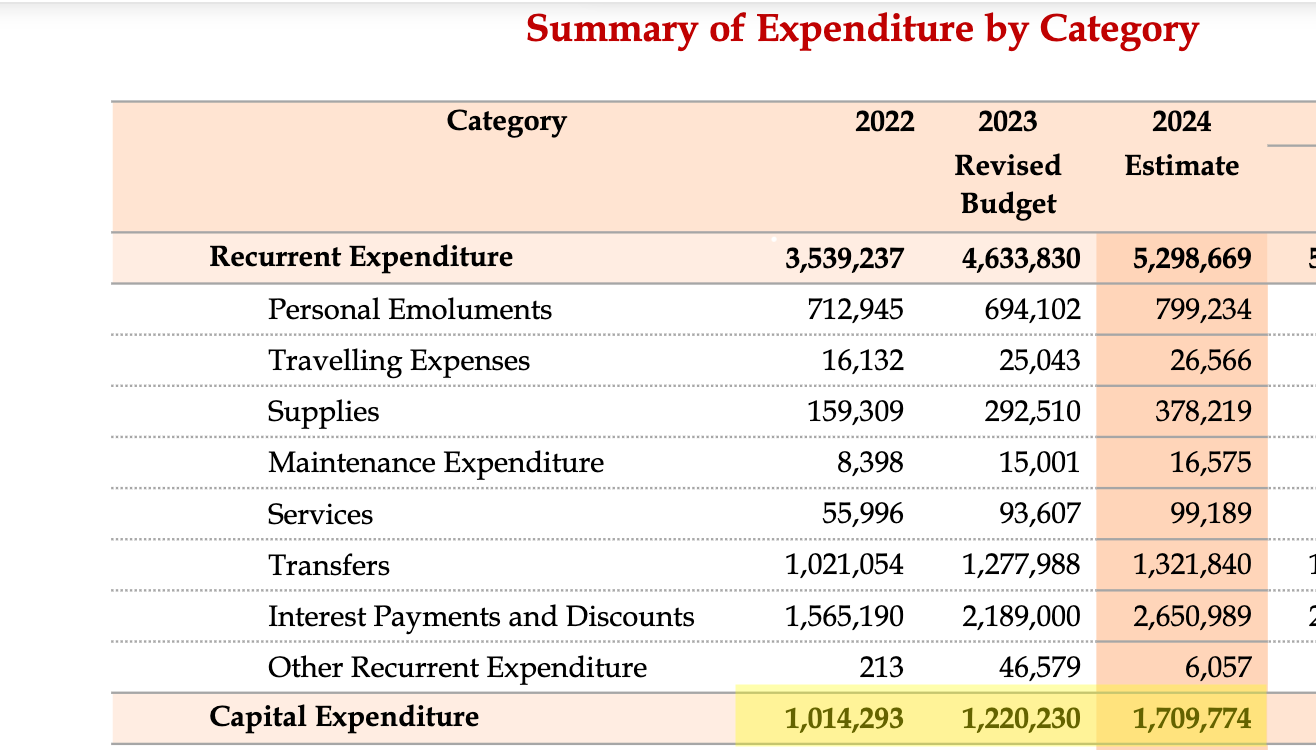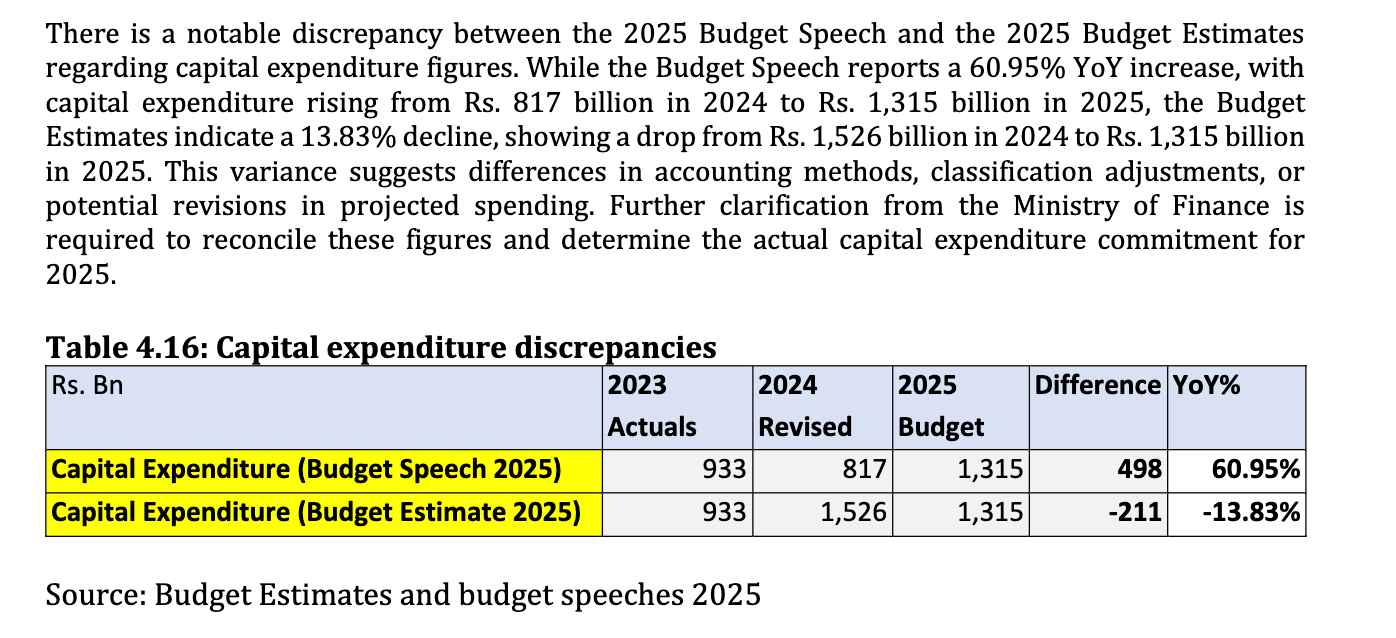How did Sri Lanka end up with a LKR 700bn discrepancy in Capital Expenditure estimates?
2025 Budget Estimates don't sync with Budget Speech numbers
Sri Lanka’s Budget 2025 was approved on 21 March and Approved Budget Estimates were released on the same day. Prime Minister announced the changes that were proposed in the committee stage and the Budget 2025 was passed (not surprisingly) with those changes.
I was expecting the Treasury to make a few changes to the “Drafted Budget Estimates” that were published alongside the second reading. One major change was the provisional capital expenditure amount for 2024. While the Draft Budget Estimates indicated this amount to be Rs.1,525 billion, Budget Speech Annexure 1 indicated Public Investment for 2024 as Rs.817 billion (a Rs. 700bn difference!). The line item ‘Public Investment’ in Budget Speech Annexure usually refers to capital expenditure. Line item “Capital Expenditure” estimated for 2025 in the Budget Estimates and “Public Investment” in Budget Speech Annexure both have the number Rs.1,315 billion, indicating that it refers to the same. However, two documents contradict the numbers for 2024.
Figure 1 : Approved Budget Estimates 2025
Figure 2 : Budget Speech 2025 - Annexure 1
Although the discrepancy is huge (more than Rs.700 billion), such differences can be there between Draft Budget Estimates and Budget Speech Annexure as the speech is prepared later (Ideally such big differences should not exist). However, these discrepancies can be corrected in the “Approved Budget Estimates” as these documents are debated in detail during the committee stages. I seems like this discrepancy went unnoticed.
This then raises the question, which is the correct number? The answer can be found in the Report on Financial Performance of the Government 2024 published by the Treasury which indicates that actual capital expenditure for 2024 was Rs.815 billion.
So if one looks at the Budget Estimates, it would imply that the capital expenditure of the government is expected to reduce by Rs.210 billion (to Rs.1,315 billion in 2025 from Rs.1,525 billion in 2024) whereas the reality is that it is expected to increase by approximately Rs.500 billion from Rs. 817bn in 2024. This increase is due to the recommencing of infrastructure projects such as Central Expressway, which were halted due to the sovereign default. The previous year's estimate for capex was high due to the expectation of finalizing debt restructuring sooner, thereby commencing these projects, and a Rs. 450 billion allocation for state-bank recapitalization measures. However, debt restructuring was finalized at the end of the year and foreign-funded projects did not recommence, resulting in the government spending less capital expenditure than estimated. And only Rs. 130 billion was utilized to support state banks, that too through a transfer under recurrent expenditure, rather than under capital expenditure.
These discrepancies have been frequent in different budget documents. While it has decreased over the last few years, this case shows that big discrepancies that could be rectified easily continue to exist. In fact, even in the 2024 budget documents these discrepancies were present for the 2022 and 2023 numbers.
Figure 4 : Approved Budget Estimates 2024
Figure 5 : Budget Speech Annexure 2024
As the extracts above show, there were significant discrepancies in the revised capital expenditure amount indicated in the Budget Speech and Approved Budget Estimates in 2024. The question is why were these discrepancies not fixed during the budget debates so that big discrepancies or incorrect numbers will not appear in the “Approved Budget Estimates”?
In fact this discrepancy was highlighted in the Report prepared by the Committee on Public Finance on Appropriation Bill for the Financial Year 2025. The said report highlights that discrepancies exist between draft estimates and budget speech numbers. The report was presented on 25 February and there was time to fix discrepancies in the committee stage. But Approved Budget Estimates suggest that discrepancies were not fixed.
Figure 6: COPF report extract on capital expenditure discrepancy
These discrepancies could often result in misleading information and confusion, particularly given that approved budget estimates are an official document that received parliament approval. In the eyes of a journalist or researcher, it is an official and a legal document. The budget process in Sri Lanka has gotten better over the last few years, and the hope is that these discrepancies will also be fixed in the future.
Disclaimer: The analysis and opinions expressed in this article are solely those of the author. Any errors and omissions are the authors sole responsibility.
You can also subscribe to
’s personal Substack:






